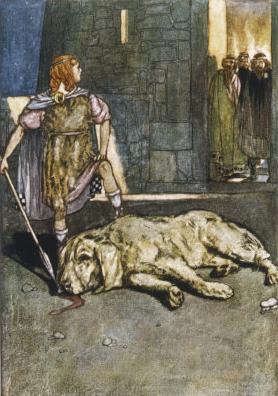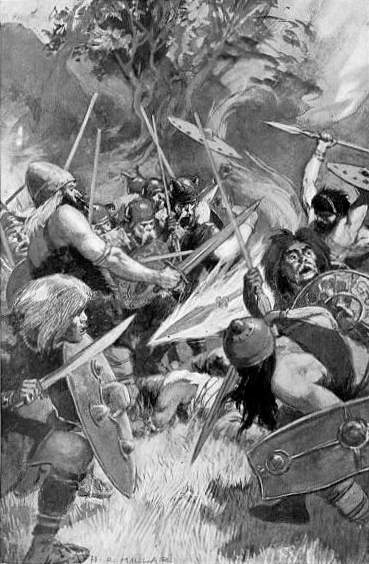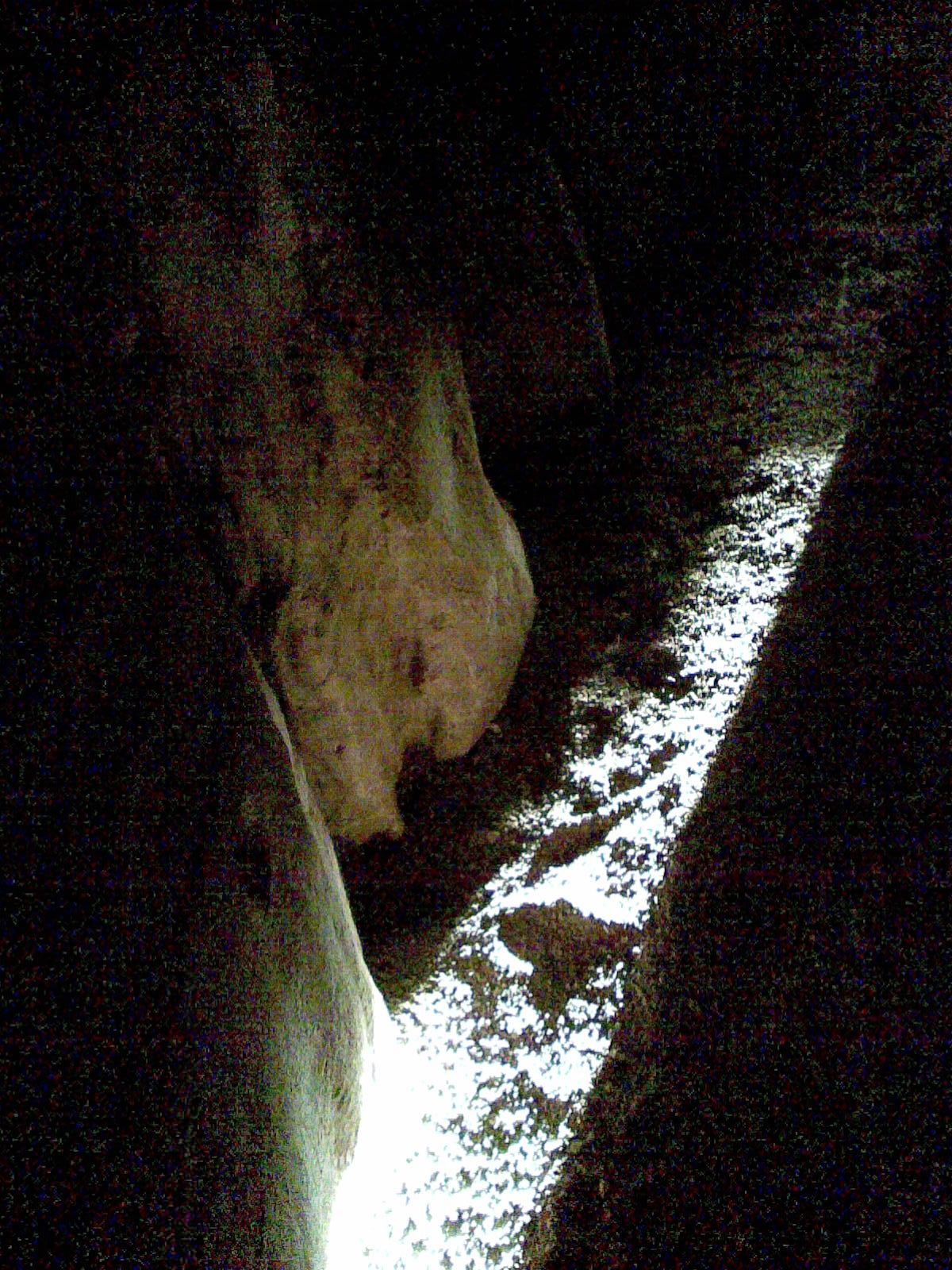|
Deichtine
In Irish mythology, Deichtine or Deichtire was the sister of Conchobar mac Nessa and the mother of Cú Chulainn. Her husband was Sualtam, but Cú Chulainn's real father may have been Lugh of the Tuatha Dé Danann. In one version of the story she was Conchobar's charioteer. When a flock of birds descended on Emain Macha and ate all the grass, the Ulstermen decided to hunt them, and they set off after them in their chariots. They chased them until night fell, and it began to snow, so they decided to seek shelter. They found a house and were welcomed in by the young man who lived there. His wife was in labour at the time, but he showed them hospitality and served them food and drink. His wife gave birth to a baby boy, and at the same time a horse outside the house gave birth to two colts. The Ulstermen went to sleep, but when they woke up they found themselves at the '' Brug na Bóinne'' (Newgrange). The house, the man and his wife had vanished, but the baby and the two colts remaine ... [...More Info...] [...Related Items...] OR: [Wikipedia] [Google] [Baidu] |
Cú Chulainn
Cú Chulainn ( ), called the Hound of Ulster ( Irish: ''Cú Uladh''), is a warrior hero and demigod in the Ulster Cycle of Irish mythology, as well as in Scottish and Manx folklore. He is believed to be an incarnation of the Irish god Lugh, who is also his father. His mother is the mortal Deichtine, sister of king Conchobar mac Nessa. Born Sétanta, he gained his better-known name as a child, after killing Culann's fierce guard dog in self defence and offering to take its place until a replacement could be reared, hence he became the "Hound (''cú'') of Culann". He was trained in martial arts by Scáthach, who gave him the spear Gáe Bulg. It was prophesied that his great deeds would give him everlasting fame, but that his life would be short. At the age of seventeen he defends Ulster single-handedly against the armies of queen Medb of Connacht in the famous '' Táin Bó Cúailnge'' ("Cattle Raid of Cooley"). He is known for his terrifying battle frenzy (''ríastra ... [...More Info...] [...Related Items...] OR: [Wikipedia] [Google] [Baidu] |
Conchobar Mac Nessa
Conchobar mac Nessa (son of Ness) is the king of Ulster in the Ulster Cycle of Irish mythology. He rules from Emain Macha (Navan Fort, near Armagh). He is usually said to be the son of the High King Fachtna Fáthach, although in some stories his father is the druid Cathbad, and he is usually known by his matronymic, ''mac Nessa'': his mother is Ness, daughter of Eochaid Sálbuide, King of Ulster. Legendary biography Birth There are several versions of how Conchobar was conceived. In the earliest, Ness, daughter of Eochaid Sálbuide, the then king of Ulster, asks the druid Cathbad what it is an auspicious time for. Cathbad replies, "for begetting a king on a queen". There are no other men around, so Ness takes Cathbad to bed and she conceives a son. In a later version, Ness is brought up by twelve foster-fathers, and while all twelve are at a feast, Cathbad, leading a ''fian'' or landless war-band, attacks the house and kills them all. Eochaid is unable to avenge them as the cul ... [...More Info...] [...Related Items...] OR: [Wikipedia] [Google] [Baidu] |
Lugh
Lugh or Lug (; ga, label= Modern Irish, Lú ) is a figure in Irish mythology. A member of the Tuatha Dé Danann, a group of supernatural beings, Lugh is portrayed as a warrior, a king, a master craftsman and a savior.Olmsted, Garrett. ''The Gods of the Celts and the Indo-Europeans''. University of Innsbruck, 1994. p.117 He is associated with skill and mastery in multiple disciplines, including the arts.Monaghan, Patricia. ''The Encyclopedia of Celtic Mythology and Folklore''. Infobase Publishing, 2004. pp.296-297 Lugh also has associations with oaths, truth and the law, and therefore with rightful kingship.Koch, John T. ''Celtic Culture: A Historical Encyclopedia''. ABC-CLIO, 2006. p.1200 Lugh is linked with the harvest festival of Lughnasadh, which bears his name. His most common epithets are ''Lámfada'' ("long hand" or "long arm", possibly for his skill with a spear or his ability as a ruler) and ''Samildánach'' ("equally skilled in many arts"). In mythology, Lugh is ... [...More Info...] [...Related Items...] OR: [Wikipedia] [Google] [Baidu] |
Irish Mythology
Irish mythology is the body of myths native to the island of Ireland. It was originally passed down orally in the prehistoric era, being part of ancient Celtic religion. Many myths were later written down in the early medieval era by Christian scribes, who modified and Christianized them to some extent. This body of myths is the largest and best preserved of all the branches of Celtic mythology. The tales and themes continued to be developed over time, and the oral tradition continued in Irish folklore alongside the written tradition, but the main themes and characters remained largely consistent. The myths are conventionally grouped into ' cycles'. The Mythological Cycle consists of tales and poems about the god-like Túatha Dé Danann, who are based on Ireland's pagan deities, and other mythical races like the Fomorians. Important works in the cycle are the '' Lebor Gabála Érenn'' ("Book of Invasions"), a legendary history of Ireland, the '' Cath Maige Tuired' ... [...More Info...] [...Related Items...] OR: [Wikipedia] [Google] [Baidu] |
Tuatha Dé Danann
The Tuath(a) Dé Danann (, meaning "the folk of the goddess Danu (Irish goddess), Danu"), also known by the earlier name Tuath Dé ("tribe of the gods"), are a supernatural race in Irish mythology. Many of them are thought to represent deity, deities of pre-Christian Gaelic Ireland. The Tuath Dé are often depicted as kings, queens, druids, bards, warriors, heroes, healers and craftsmen who have supernatural powers. They dwell in the Celtic Otherworld, Otherworld but interact with humans and the human world. They are associated with the ''sídhe'': prominent ancient burial mounds such as Brú na Bóinne, which are entrances to Otherworld realms. Their traditional rivals are the Fomorians (Fomoire), who might represent the destructive powers of nature, and whom the Tuath Dé defeat in the Cath Maige Tuired, Battle of Mag Tuired. Prominent members of the Tuath Dé include The Dagda ("the great god"); The Morrígan ("the great queen" or "phantom queen"); Lugh; Nuada Airgetlám, N ... [...More Info...] [...Related Items...] OR: [Wikipedia] [Google] [Baidu] |
Emain Macha
Navan Fort ( sga, Emain Macha ; ga, Eamhain Mhacha, label=Modern Irish ) is an ancient ceremonial monument near Armagh, Northern Ireland. According to tradition it was one of the great royal sites of pre-Christian Gaelic Ireland and the capital of the Ulaidh. It is a large circular hilltop enclosure—marked by a bank and ditch—inside which is a circular mound and the remains of a ring barrow. Archeological investigations show that there were once buildings on the site, including a huge roundhouse-like structure that has been likened to a temple. In a ritual act, this timber structure was filled with stones, deliberately burnt down and then covered with earth to create the mound which stands today. It is believed that Navan was a pagan ceremonial site and was regarded as a sacred space. It features prominently in Irish mythology, especially in the tales of the Ulster Cycle. According to the ''Oxford Dictionary of Celtic Mythology'', "the amhain Mhachaof myth and legen ... [...More Info...] [...Related Items...] OR: [Wikipedia] [Google] [Baidu] |
Ulaid
Ulaid (Old Irish, ) or Ulaidh (Modern Irish, ) was a Gaelic over-kingdom in north-eastern Ireland during the Middle Ages made up of a confederation of dynastic groups. Alternative names include Ulidia, which is the Latin form of Ulaid, and in Cóiced, Irish for "the Fifth". The king of Ulaid was called the '' rí Ulad'' or ''rí in Chóicid''. Ulaid also refers to a people of early Ireland, and it is from them that the province of Ulster derives its name. Some of the dynasties in the over-kingdom claimed descent from the Ulaid, but others are cited as being of Cruithin descent. In historical documents, the term Ulaid was used to refer to the population group of which the Dál Fiatach was the ruling dynasty. As such, the title ''Rí Ulad'' held two meanings: over-king of Ulaid and king of the Ulaid, as in the Dál Fiatach. The Ulaid feature prominently in the Ulster Cycle of Irish mythology. According to legend, the ancient territory of Ulaid spanned the whole of the modern ... [...More Info...] [...Related Items...] OR: [Wikipedia] [Google] [Baidu] |
Newgrange
Newgrange ( ga, Sí an Bhrú) is a prehistoric monument in County Meath in Ireland, located on a rise overlooking the River Boyne, west of Drogheda. It is an exceptionally grand passage tomb built during the Neolithic Period, around 3200 BC, making it older than Stonehenge and the Egyptian pyramids. It is aligned on the winter solstice sunrise. Newgrange is the main monument in the Brú na Bóinne complex, a World Heritage Site that also includes the passage tombs of Knowth and Dowth, as well as other henges, burial mounds and standing stones. Newgrange consists of a large circular mound with an inner stone passageway and cruciform chamber. Burnt and unburnt human bones, and possible grave goods or votive offerings, were found in this chamber. The mound has a retaining wall at the front, made mostly of white quartz cobblestones, and it is ringed by engraved kerbstones. Many of the larger stones of Newgrange are covered in megalithic art. The mound is also ringed ... [...More Info...] [...Related Items...] OR: [Wikipedia] [Google] [Baidu] |


.jpg)

